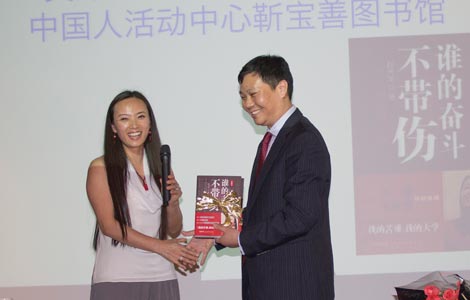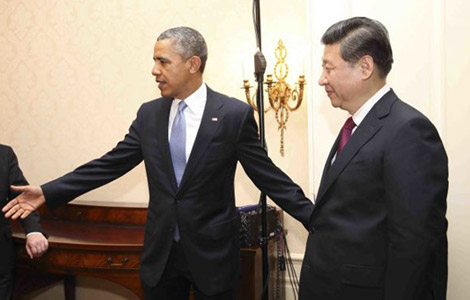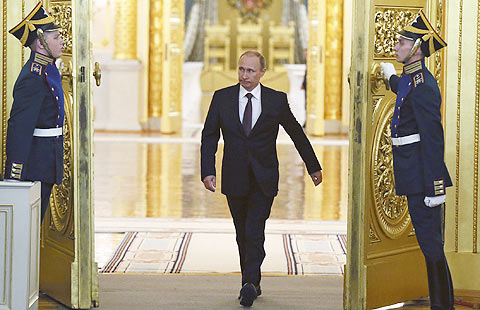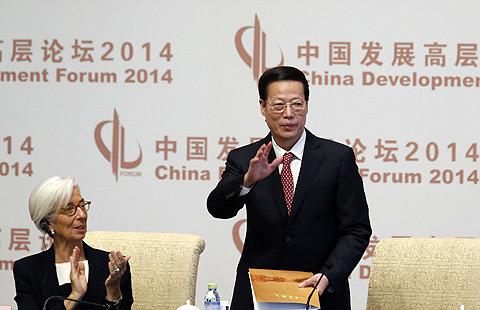Questioning sustainability of China economic growth
Updated: 2014-03-26 15:07
By Zhu Ning (China Daily USA)
|
||||||||
Policy | Zhu Ning
With the announcement of the tapering off of quantitative easing by the US Federal Reserve in 2013, emerging markets started feeling the chill. The currency and stock market have suffered losses of 30 percent in some countries, in conjunction with drastic capital flows out of emerging markets and back into safer assets such as US Treasury bonds.
China was no exception in this process. Even with its regulations on domestic interest rates, the yuan currency rate and capital flow, China has shown some signs of slowing down. The rate of growth has come down to some of its slowest in the past decade, the Purchasing Managers' Index has been hovering around the critical point between expansion and contraction and even the once sizzling real estate market seems to have started sputtering in some second- and third-tier cities.
Such slowing down of the Chinese economy has attracted considerable international attention. Once again, some voiced their concerns about the sustainability of the economy and questioned whether China can continue its miraculous economic growth over the next decade.
Michael Pettis's book Avoiding the Fall: China's Economic Restructuring summarizes such views and predicts that China's growth could collapse within three years unless its economic model is reformed.
Pettis argues that debt has reached unsustainable levels and that the country's investment-led model has to be replaced by one in which consumption plays a bigger role. He believes the government can make the reforms but that if it does everyone will have to get used to GDP growth of 4 to 5 percent over the next 10 years. Given this paradox between the speed and quality of economic growth, Pettis seems rather pessimistic about China's future.
Granted, the Chinese economy is going through a period of challenging reform and many problems surface during such a process. With increasing labor costs, appreciation of the yuan and dwindling international demand, exports, the traditional driving force of Chinese economic growth, inevitably slows down. To make up the void left by slowing exports, over the past decade China has been considerably increasing its investment, especially investment related to infrastructure construction and State-owned enterprises.
Such investments have proved effective in boosting economic growth in the short term, especially during the 2008 to 2009 global financial crisis. However, given the low financial returns and disappointing efficiency of such investments, lately the economy has started feeling the aftermath of such stimulus packages.
According to many reports, new cities with few people living in them sprang up in many parts of the country. Investments in certain areas already troubled by overcapacity, such as steel, concrete and solar panels kept increasing. More people switched from their traditional business and put their money into speculative areas such as real estate and so-called shadow banking.
Investment and stimulus indeed did have some positive effects in averting an economic crisis in the short term. However, many policymakers and academics agree that such short-term measures run the risk of modifying the long-term expectations of businesspeople and households.
Because plant owners and wealthy individuals all expected greater investment down the road, they kept pouring their money into non-sustainable risky investment projects in the hope that the next stimulus round would rationalize their increasingly reckless investments.
The author is a faculty fellow at the International Center for Finance, Yale University, and deputy dean of the Shanghai Advanced Institute of Finance, Shanghai Jiaotong University.
(China Daily USA 03/26/2014 page15)

 Xi says China strengthens its nuclear security system
Xi says China strengthens its nuclear security system
 From school dropout to universal appeal
From school dropout to universal appeal
 Xi and Obama talk about family and jokes
Xi and Obama talk about family and jokes
 17 days of prayers and hope
17 days of prayers and hope
 Prosperity poised to blossom
Prosperity poised to blossom
 Chinese Consulate General in NY meets press
Chinese Consulate General in NY meets press
 China Southern will launch Guangzhou-NY service
China Southern will launch Guangzhou-NY service
 The world in photos: March 17-23
The world in photos: March 17-23
Most Viewed
Editor's Picks

|

|

|

|

|

|
Today's Top News
New centers to boost US-China ties
China-US 'sister' ties in full bloom
AALDEF to honor Chinese-American lawyer
Charles Yang integrates the violin into modern music
US first lady says embrace similarities
Angry relatives of lost 370 victims demand answers
Xi says China strengthens its nuclear security system
Judge makes history in Maryland
US Weekly

|

|







